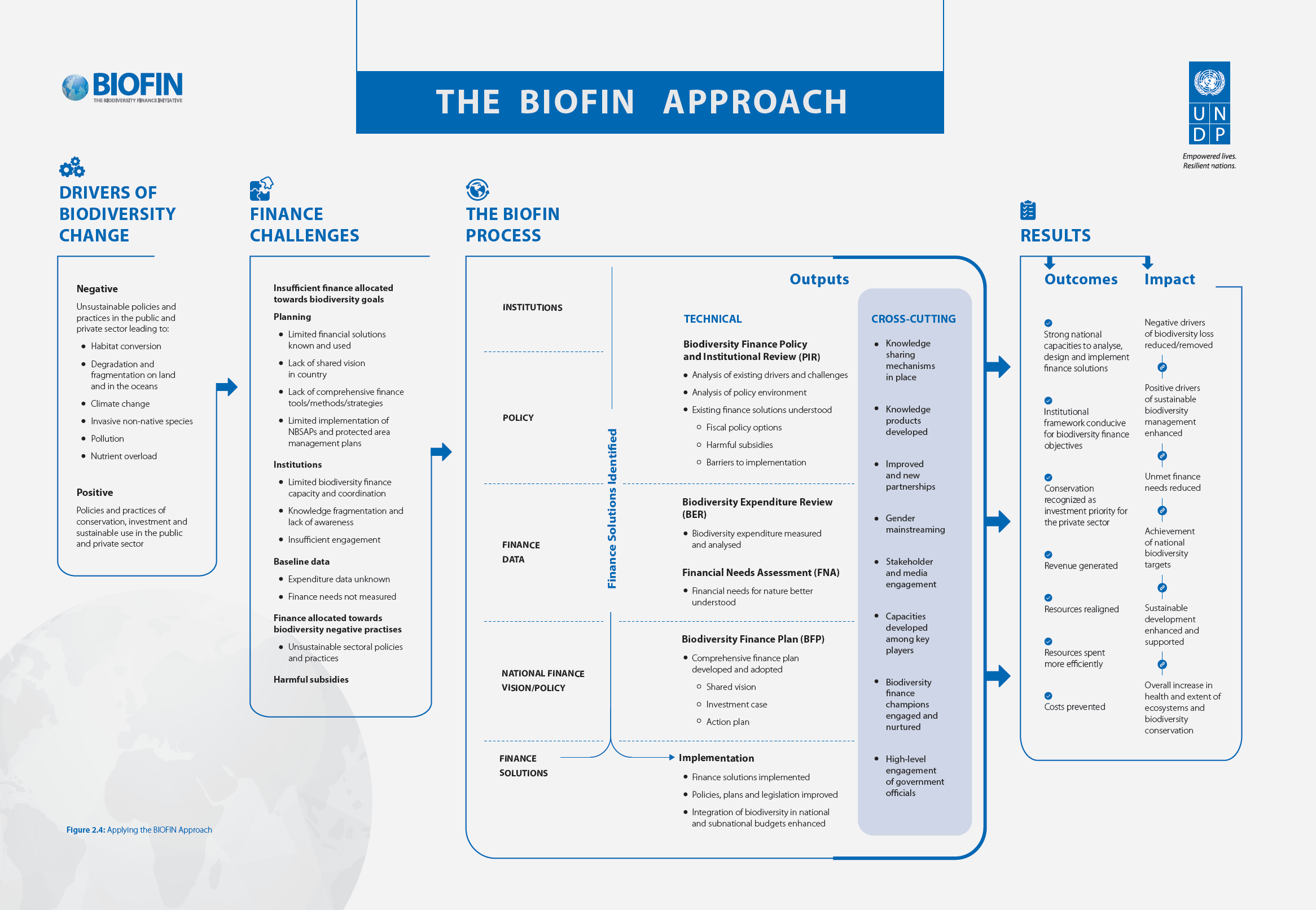2.2.1 The BIOFIN approach
The BIOFIN approach starts with a baseline scenario, typical for most countries, where both the levels and need of biodiversity financing are unclear. BIOFIN works with countries towards a future scenario where these amounts become known (left column in Figure 2.3) and where solutions are deployed to meet the challenge of financing biodiversity. The BIOFIN Process thus aims to increase the financial envelope for biodiversity, realign expenditures where it matters most (e.g. by greening harmful subsidies to biodiversity), reducing future costs by investing in preventive actions (e.g. by stopping alien species and saving the eradication costs), and delivering better on every dollar spent (right column in Figure 2.3). The work leads to improved biodiversity management and enhanced well-being for people dependent on nature’s services.
Figure 2.3: The BIOFIN Approach
BIOFIN takes this theoretical approach and creates a practical application to manage its complexity. Figure 2.4 describes how the BIOFIN Process thus becomes operational by combining a technical analysis, detailed in the BIOFIN methodology, with overarching frameworks and activities to produce and implement a Biodiversity Finance Plan (BFP). The BIOFIN approach starts with understanding the drivers of biodiversity change and matching them with financing challenges and solutions. This culminates with a shifting scenario and a new path for biodiversity conservation. BIOFIN promotes a holistic approach that addresses multiple challenges, such as the lack of existing data on finance needs and expenditures, capacity deficits, lack of coordination and too much reliance on a limited number of finance sources and solutions.
